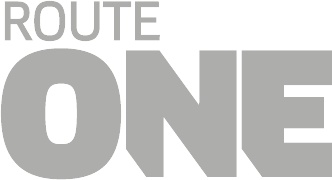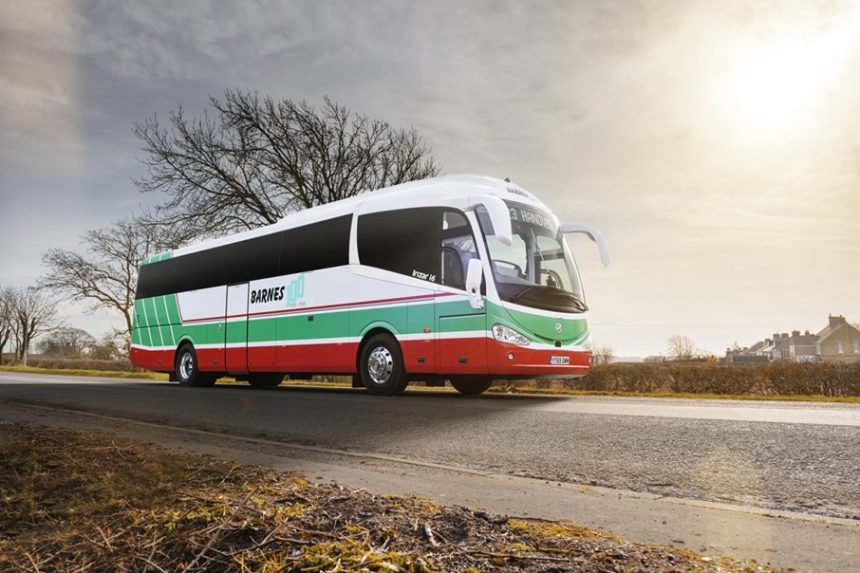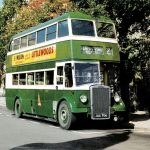One of the industry’s most notable developments of recent years was debut of The Coach Travel Group (CTG) in June 2024. It brought together seven formerly independent operators under one umbrella. Clear from the start was that expansion is on the agenda – and that was delivered late last year with the purchase of Horseman Coaches and Stewarts Coaches, both of Reading.
At the helm of CTG is Tom Stables as CEO. He is a longstanding coach leader, having served as head of National Express operations in the UK and Germany. While private equity is ultimately behind CTG, Tom is adamant that it is one thing first and foremost: A coach operator, like thousands of such businesses across the UK.
Those other operators continue to watch consolidation of the coach industry with interest. CTG is not the only group that has funding for further purchases, and Tom is upfront that the growth agenda remains clear, not just within the UK but potentially further afield. Ireland is a market of perhaps more than passing interest.
Tom reports that first year targets for CTG were met. Launching in mid-2024 put it squarely in the busy period and delivering that was the immediate priority. “It was imperative that our businesses continued to operate in a calm manner and were not unnerved by what we were doing,” he says.
Employee upheaval via consolidation of family-owned companies into a large group was another consideration. Tom notes how coach operators are rooted in their communities, and that retaining those connections is a key component of future strategy. Individual names and brands are thus secure.

Multi-pronged approach to building The Coach Travel Group
What is in the works beyond growth are plans to build cross-operator efficiency, develop talent internally, and influence wider policy direction for the coach industry. Zero-emission is part of the latter, but raising awareness of how the sector can contribute to the overall transport ecosystem is equally prominent.
Further acquisitions will be via a targeted strategy. “We are not going to run at everything,” Tom says. “We are considerate about [the operators] we buy. We will pick and choose because we want to be a good owner for the business and its people, and the legacy. It also needs to fit with our model and what we want to do.”
Growth potential and contract income is an important part of acquisition policy. That was shown with Stewarts and Horseman, and the more recent take-up of a scheduled service contract for Flibco between London and Stansted Airport.
The geographic spread of current CTG businesses is led by the M4 corridor, with others in the Midlands, Greater Manchester, North Wales, Teesside and Tyne and Wear. Expanding that coverage is part of the group’s plan, Tom notes.
“We have looked at the map and population centres, but overlaid with that is what could be called ‘strategic locations’ in terms of where we know there are a lot of vehicle movements. We want to have a reasonable network of depots; we are not yet sure what that will be in reality, but with an optimal distance to manage deadheading, engineering requirements, and so on.”
Further purchases in areas where CTG is already active are not ruled out where a ‘bolt-on’ approach can be deployed. But there are significant parts of the UK where the group lacks a presence. “A greater spread is something we see as important and want,” he continues. “We are also looking at brownfield sites where we could potentially start new operations where we believe there is potential, if that is a better approach.”

Scope to share learnings across businesses
Leveraging crossover between operators is a core part of CTG strategy. Three of its businesses are viewed as anchors for holiday products. Collaboration between them is growing, but differences in how the product is delivered by those brands gives further opportunity to learn.
“That is the benefit of being a group,” Tom explains. “We are looking across our portfolio as to how we run holidays, enhance them, plan efficiently, and share knowledge about what works.” Expanding holiday products into areas where they are not currently offered by CTG is also being explored, including scope for vehicles to serve customers in non-native areas when passing through.
Other group-related benefits come through capacity utilisation and technology use. In the latter respect, buying once and deploying widely is effective; customer service channels are one area that could benefit. Wider group-based procurement has already been used in coach purchasing with an order for 42 Scania Tourings in 2024.
Leveraging vehicle and driver resources looks at how they can be temporarily moved between businesses. “All operators have seasonality, but it is not identical,” he continues. “A group approach is already allowing us a greater degree of flexibility. That takes time, but we are seeing some early advantages.”
Efficiency in work planning is key for The Coach Travel Group
A geographic spread of operations potentially also mitigates the need to use double drivers on some work; it additionally can see more effective usage of vehicles and staff when they are away from home and have downtime.
Doing that effectively is reliant on a cohesive overall structure. A move towards a regional approach has begun with appointment earlier in 2025 of former Kings Ferry man Ian Fraser as Regional Managing Director of London and the South East. He has overall responsibility for Horseman Coaches, The Ready Group, Stewarts Coaches and the Flibco contract at Stansted.
“That will be the model as we expand to ensure that regions are coordinated,” Tom says. He adds that interaction of work across operations is part of that, with efficiency via planning as a region the primary driver.

Notwithstanding the commitment to keep individual brands, there is a balance to be struck between local and group-led considerations. “That is still developing at the moment as CTG evolves, but the real key is that we will retain what makes our local businesses the successes they are: Local sales, local relationships, local passion, and local ownership combined with the best a wider group can bring.”
Developing its own talent a major focus
A growing business translates to a growing need for talent. Although Ian Fraser was an external appointment, Tom is keen that CTG develops a pipeline of people who can take on leadership roles. Some of those positions may only come to exist as growth progresses, but he notes how the business already has several younger staff who are showing excellent potential.
“When we are looking at acquisitions, we consider not only the business but the people in it,” he continues. “A good, established management team offers us more because it can function within our group in a stronger way.
“But we very much look to develop our own talent. As a company gets bigger, it has a responsibility to do that. We need the operational and commercial managers of the future. Unless we invest in people, we will not get them.” Engineering is another key area. Sitting above it all is ensuring those career avenues are visible to those outside the coach industry.

Contributing to coach policy direction
Coach’s position in policy is of interest to CTG. Tom is keen for greater clarity on zero-emission for the sector. A small number of battery-electric coaches are already within the group, but like others in the industry, he views public charging or hydrogen fuelling infrastructure as key to unlocking more.
Government policy will drive that, he believes, and operators’ voices must be heard. “For too long, we have been at the back of decision-making. That is not malicious; we are just not thought about,” Tom continues. “Things such as bus lane use and parking. And yet as an industry we deliver billions to the economy. How we speak collectively is important and I think CTG can bring something to that.”
The future for the Coach Travel Group is built around multiple items, as Tom explains. Further acquisitions are front and centre but matters that are less likely to grab the headlines are equally important. Driving efficiency is a priority, as is developing and attracting the right staff.
More growth is expected soon. “We are currently at around 550 vehicles and over the next few years I could easily see that doubling or even tripling,” he adds. “I have no hard limit on where we want to be. We must be mindful of many things, including the competitive dynamic, but at the moment, we see plenty of headroom to expand.”


























